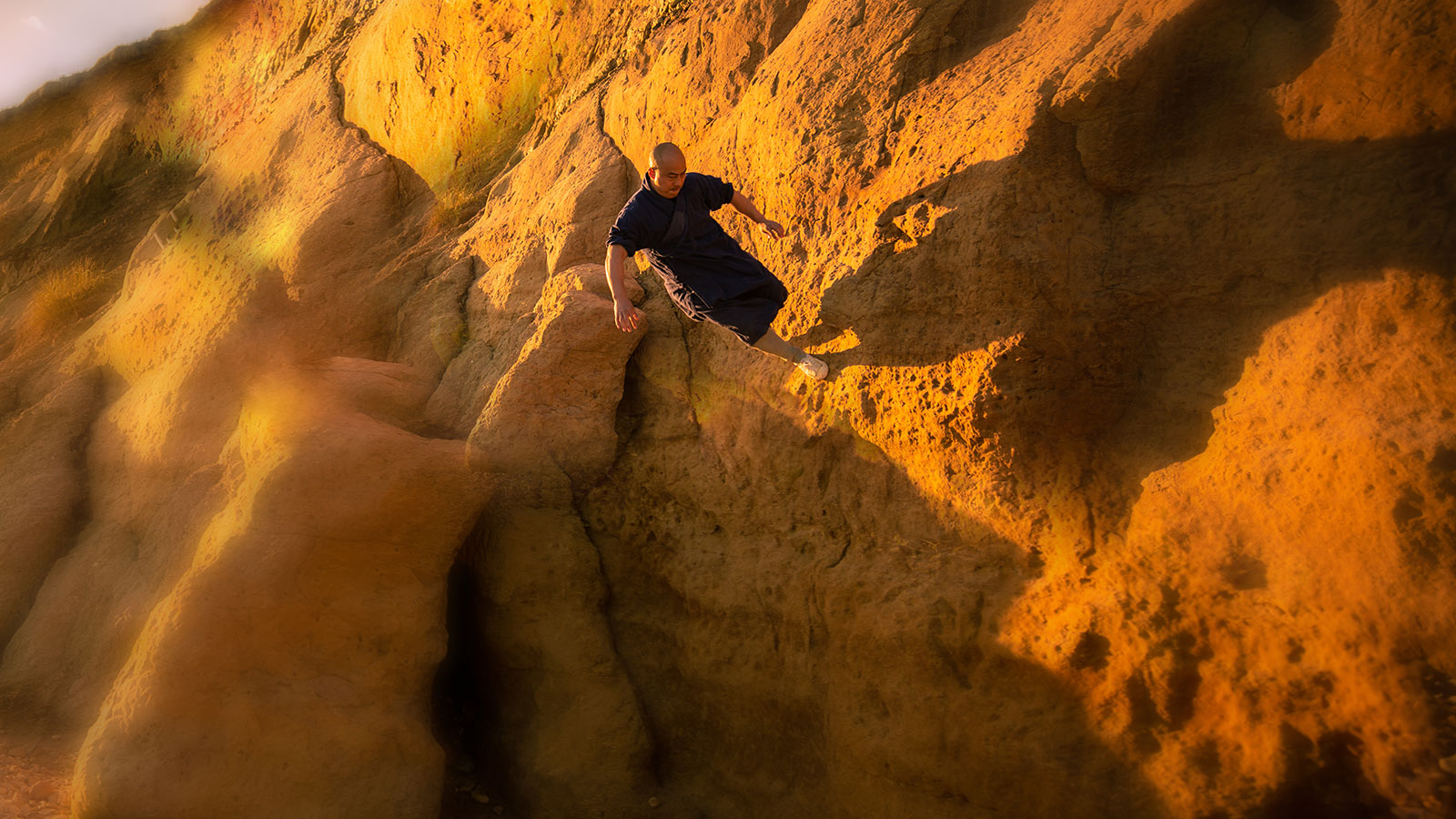
Shaolin Kung Fu refers to a traditional system which was born from Ch’an Buddhism and Chinese culture and specific to the environment of the Shaolin Temple in Songshan Mountain. Amongst the various types of Kung Fu, the Shaolin system is believed to be the founding style of all martial arts. This tradition began around 1,500 years ago. It began modestly at first with general exercises to improve the health of the Shaolin Monks and later developed into a profound tradition including barehand and weapons forms, self-defence and meditation techniques, amongst others. In addition, Shaolin Kung Fu has spread throughout the world and is widely practised today.
A well known translation of “Kung fu”/”Gong Fu” is skill or effort. This term can be applied to any craft, skill or activity, whether physical, spiritual or intellectual and it may also be used as a way of describing a certain special quality. Kung Fu also refers to martial arts and given the previous association, it is a fitting term because a martial art requires great effort and artistry, cultivated over many years training.[/vc_column_text][vc_column_text]In addition, many names are used when referring to Chinese martial arts (e.g. Wushu, Kung Fu, Gong Fu, Tai Chi, Qi Gong, Shaolin, Wudang etc) but it is important to stress that exact terms are insignificant. The term Kung Fu may encompass many forms of Chinese martial arts.
Kung Fu consists of a long history and includes many different disciplines and styles; all of which include a detailed structure of their own. Each variant of Kung Fu comprise of techniques for attack and defence applications and presents them in their own unique way.
Alongside the physical aspect of Kung Fu, its philosophy includes many aspects of Chinese culture which were absorbed during its formation and development. The most significant aspect which is found in the Shaolin school, is Ch’an Buddhist philosophy. The Ch’an tradition imparted profound connotations on Shaolin Kung Fu. For a detailed comprehension and practice of Shaolin Kung Fu and Chinese martial arts in general, one should understand Ch’an’s philosophy and practice.
The first Patriarch of Ch’an Buddhism was the Indian monk Bodhidharma. He introduced the Ch’an tradition to the Shaolin Temple in the 6th century and from that time the temple has been regarded as the origin of Ch’an Buddhism in China. Bodhidharma is a highly regarded figure, symbolising wisdom and strength.
Ch’an places stress on awareness and cultivation of physical, mental, emotional and spiritual development in order to achieve realisation or enlightenment. This idea complements the practice of Kung Fu because it continuously cultivates the physical body, mind, spirit and emotions. Kung Fu is therefore a form of physical meditation, or Ch’an. Ch’an symbols are incorporated in to the Kung Fu forms as well as the inclusion of Ch’an precepts in the ethics of Kung Fu. For example, the Shaolin Monks practice martial arts for self-defence purposes only.
Additionally, Shaolin, as well as other forms of Kung Fu contain wisdom from other cultural, religious and philosophical traditions in China. For example, Daoism and its understanding of yin and yang is the fundamental philosophy of Tai Chi.
To summarize, Shaolin Kung Fu is a complex physical form, which is based in Ch’an philosophy. Kung Fu can therefore be a path in the attainment of realisation.[/vc_column_text][vc_empty_space][vc_single_image image=”57083″ img_size=”full” alignment=”center”][vc_empty_space][vc_column_text]Components
Chinese martial arts are complicated in structure and abundant in styles. According to tradition, Shaolin Kung Fu is the first formal style which became one among many Chinese martial arts disciplines and additional schools and disciplines. However an interpretation of Kung Fu should not determined upon the specific discipline or martial art school, but rather be considered as a profound art with a rich contents.
Kung Fu can be classified into two types: barehand and weapons. While the weapons can be divided into long, short, and soft weapons. In general, Kung Fu disciplines organise their techniques into a few broad categories, including: Tao Lu – Forms (a routine of movements), Ji Ben Gong – Basics (foundational techniques) and Shi Jian – Applications.[/vc_column_text][/vc_column][/vc_row]
Share This Story!
STAY IN THE LOOP




